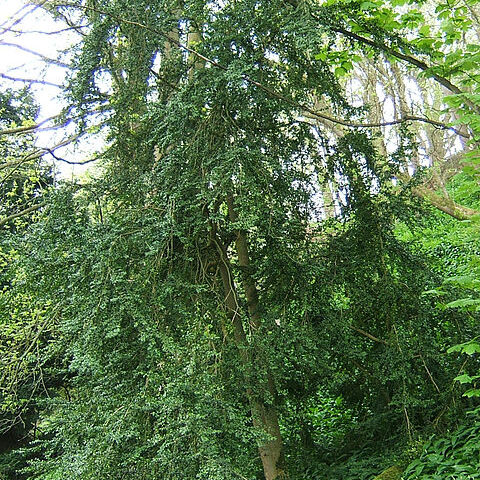Trees, shrubs or rarely herbs. Leaves evergreen, simple, alternate or opposite, often coriaceous, exstipulate. Flowers unisexual, monoecious or dioecious (rarely with a few hermaphrodite ones), in spikes, fascicles or cymes. Sepals 0–4, imbricate. Petals absent. Stamens 4–6, more rarely 7–10, opposite the sepals or with two pairs opposite the inner sepals ; the male flowers often have a rudimentary ovary. Ovary superior, 3-locular ; styles 3, entire or grooved ; ovules 1–2 per loculus, pendulous. Fruit a capsule or a drupe. Seeds black and shining ; endosperm fleshy
Male flowers with 4 perianth segments and 4–6(10) stamens, rarely (only in the South American genus >i>Styloceras and the North American genus >i>Simmondsia) stamens numerous, opposite the perianth segments, or with more stamens at each perianth segment, when stamens 6 then usually 2 opposite the inner pair of perianth segments; filaments present or absent; rudimentary ovary present or absent
Female flowers usually much larger than male ones, with 4–6 perianth segments; staminodes absent; ovary superior, 3-locular, with 3 entirely free basally connate styles which are often grooved along the upper surface; ovules 1–2 per locule, pendulous, anatropous
Flowers small, unisexual (very rarely some in an individual bisexual), usually in dense bracteate spikes, fascicles or cymes, monoecious or rarely dioecious; perianth segments sepal-like, membranous or apparently absent
Leaves simple, opposite, rarely alternate, usually coriaceous, evergreen, with entire margin, rarely toothed (only in the Asian genus Pachysandra); stipules absent
Stamens 4 or 6, rarely more; anthers large, sessile or stalked, cells 2-valved or opening lengthwise
Fruit a capsule or drupe, often with a detaching endocarp at maturity
Flowers unisexual, monoecious or dioecious, spicate or fasciculate
Female flowers often larger than the males and fewer or solitary
Leaves evergreen, alternate or opposite, simple; stipules absent
Seeds black, shining, with fleshy endosperm and straight embryo
Ovary superior, 3-celled; styles undivided
Seeds black and shiny; endosperm fleshy
Sepals imbricate or absent, usually 4
Rudimentary ovary sometimes present
Ovules 1–2, pendulous, anatropous
Trees or shrubs, rarely herbs
Trees or shrubs, rarely herbs
Fruit a capsule or drupe
Sepals as in the males
Petals absent

